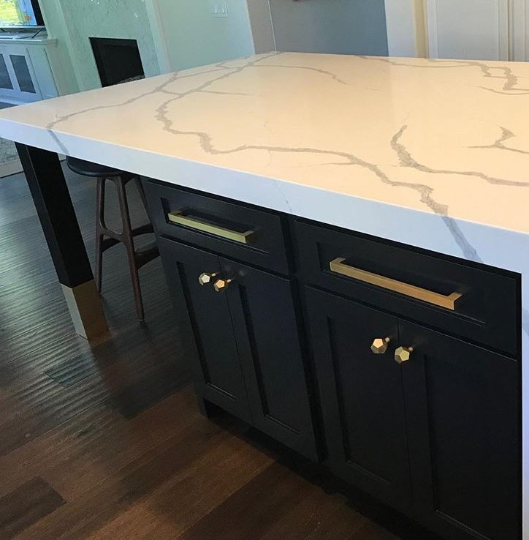Reinvent Your Kitchen's Look with One-of-a-kind Legs For Kitchen Island Accessories
Reinvent Your Kitchen's Look with One-of-a-kind Legs For Kitchen Island Accessories
Blog Article
Important Factors to Think About When Selecting Legs For Kitchen Island
Picking the proper legs for a kitchen area island entails a cautious analysis of multiple factors that can significantly affect both functionality and aesthetic allure. As we explore these aspects, it comes to be clear that each choice can have far-ranging implications for the overall kitchen experience.
Product Options
When choosing legs for a cooking area island, recognizing the various product options is crucial for attaining both aesthetic appeal and structural integrity (Legs For Kitchen Island). The option of product significantly affects not just the longevity of the island but also its overall style and functionality
Timber is a popular option, offering warmth and versatility. Solid hardwoods, such as oak or maple, supply toughness and can be discolored or repainted to match the cooking area style. Steel legs, often made from stainless steel or wrought iron, contribute a industrial and contemporary feel while guaranteeing resilience and security. These materials are immune to put on and can sustain considerable weight, making them suitable for larger islands.
An additional option is crafted materials, like MDF or plywood, which can be a lot more cost-effective while still providing an array of coatings. They may not provide the exact same degree of security as solid timber or steel. Legs For Kitchen Island. Products such as acrylic or glass can develop a modern appearance, though they may need additional support to guarantee stability.
Inevitably, the choice of product for kitchen island legs should align with the desired capability and the total style of the kitchen.
Design and Style

When considering style, the shape and surface of the legs are vital. Tapered legs can give a sense of lightness and style, while thicker, much more robust legs can convey strength and security. In addition, the coating-- be it painted, tarnished, or all-natural-- ought to enhance the cabinetry and counter top products to produce a unified appearance.
Moreover, the design of the legs can additionally show individual preference. Personalized or attractive legs, such as those featuring complex carvings or distinct geometric shapes, can serve as centerpieces, adding character and character to the kitchen. Eventually, the appropriate choice will not only improve performance yet additionally raise the aesthetic appeal, making the kitchen island a standout feature of the home.
Elevation Considerations
Choosing the proper elevation for cooking area island legs is vital, as it straight affects both functionality and comfort. The conventional elevation for a kitchen island typically varies from 36 to 42 inches, straightening with typical counter top elevations.

It is likewise necessary to represent individuals' elevations and preferences. Tailoring the height can ensure a comfy experience for all relative, making the cooking area island a more enjoyable and functional room.
Weight Support
Guaranteeing adequate weight support for cooking area island legs is crucial for both safety and capability. The kitchen island commonly serves several functions, consisting of cooking, eating, and added storage, demanding a durable assistance framework. When selecting legs, it is crucial to take into consideration the total weight capacity required based upon the island's planned use and the materials that will be put on it.
The selection of product for the legs plays a considerable function in their weight-bearing capacities. Strong wood, metal, and sturdy composites normally provide remarkable toughness compared to lighter materials. Furthermore, the style of the legs-- whether they are straight, tapered, or have a pedestal form-- can affect their ability to distribute weight efficiently throughout the framework.
Moreover, the leg positioning need to be tactically intended to improve security. Legs positioned at the edges or with a broader base can much better sustain larger loads. Constantly get in touch with the supplier's specs concerning lots limitations to guarantee that the legs can maintain the intended weight without endangering security. In summary, selecting cooking area island legs with sufficient weight assistance is crucial for developing a useful and risk-free culinary area.
Installment and Maintenance
Proper setup and upkeep of kitchen area island legs are important for making sure durability and security. This frequently entails safeguarding the legs to the island base utilizing suitable bolts, making sure that the legs are degree and straightened.
Once mounted, normal upkeep is necessary to preserve the integrity and look of the legs - Legs For Kitchen Island. For wood legs, periodic cleansing with a wet fabric and application of suitable wood gloss can prevent dampness damages and keep their coating. Steel legs might require a gentle cleansing remedy to remove grease and gunk, adhered to by a dry towel to avoid corrosion formation
In addition, check the legs consistently for signs of wear or damage, such as splits or loosened joints. Tightening screws or bolts as needed can also prolong the life-span of the legs. By adhering to these setup and upkeep methods, property owners can make certain that their cooking area island remains tough and visually appealing for several years why not try these out to come.
Conclusion

Visual comprehensibility is vital in choosing the design and layout of legs for a kitchen area island, as these aspects greatly affect the total ambiance of the space. Tapered legs can give a sense of agility and style, while thicker, more robust legs can convey toughness and security.Selecting the suitable height for cooking area island legs is vital, as it straight affects both performance and comfort. In recap, selecting kitchen area island legs with sufficient weight assistance is vital for developing a secure and functional culinary basics room.
In final thought, picking legs for a kitchen island demands cautious factor to consider of numerous factors, including material choices, style, elevation, weight assistance, and installation.
Report this page